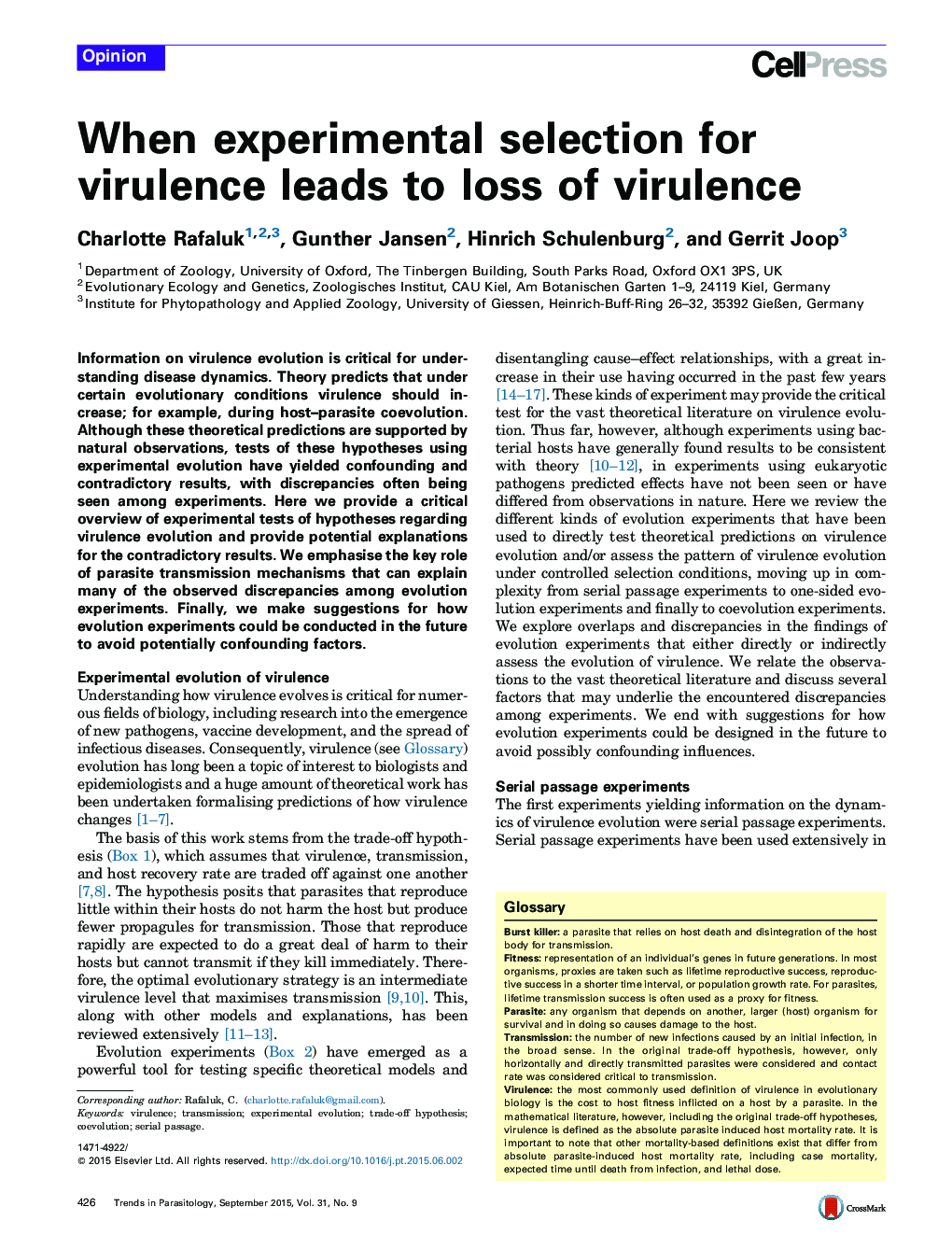| Article ID | Journal | Published Year | Pages | File Type |
|---|---|---|---|---|
| 3422908 | Trends in Parasitology | 2015 | 9 Pages |
•Understanding the evolution of virulence is vital for understanding the spread of disease.•Evolution experiments are a powerful tool to test specific hypotheses.•In some cases results have not matched expectations.•Transmission mode is key for understanding these unexpected results.•We suggest more careful consideration of transmission mode.
Information on virulence evolution is critical for understanding disease dynamics. Theory predicts that under certain evolutionary conditions virulence should increase; for example, during host–parasite coevolution. Although these theoretical predictions are supported by natural observations, tests of these hypotheses using experimental evolution have yielded confounding and contradictory results, with discrepancies often being seen among experiments. Here we provide a critical overview of experimental tests of hypotheses regarding virulence evolution and provide potential explanations for the contradictory results. We emphasise the key role of parasite transmission mechanisms that can explain many of the observed discrepancies among evolution experiments. Finally, we make suggestions for how evolution experiments could be conducted in the future to avoid potentially confounding factors.
